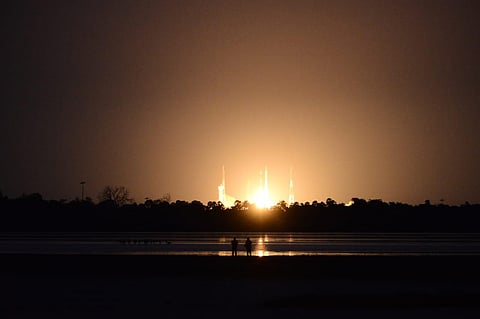The implications of ISRO mission failure
The August 12 mission failure of ISRO to put its most advanced earth observation satellite in orbit came at a time when India most needed not one but an entire constellation of such satellites up in orbit. The 2.2-tonne Geo Imaging Satellite-1 (GISAT-1) was designed to provide advance information on weather conditions, agriculture, forestry, natural disasters and water bodies, besides strategic data for military use, and all that in near-real time mode. The mission failure came at a time when India is not only experiencing a series of natural disasters across the country, but is also faced with military challenges on the northern and northeastern borders.
The crucial satellite-carrying third stage of India’s Geosynchronous Satellite Launch Vehicle-F10, a GSLV Mark-II rocket, failed to ignite. Its failure meant the collapse of the entire mission, notwithstanding the success of the first two stages. While ISRO Chairman Dr K Sivan has attributed it to a “technical anomaly”, the setback is much larger than what meets the eye. GISAT-1 was planned to be the first of two such identical satellites to be put into space to relay back crucial data. The two satellites were planned to image in the multispectral and hyper-spectral bands to provide near real-time pictures of large areas of the country—selected field images every five minutes and entire Indian landmass images every 30 minutes at 42-metre spatial resolution.
The GISAT-1 mission was already postponed from its initial 5 March 2020 schedule due to technical reasons. This failure means a further delay after waiting out almost a year and a half. This may also impact the schedule of India’s manned space mission, Gaganyaan, which plans to use the heavy-lift GSLV Mark-III rockets (heftier version of GSLV Mk-II that tried launching GISAT-1) with live crew and instruments as payload in 2022-23. The first unmanned Gaganyaan mission is scheduled for December this year. It is time for ISRO to put its head down and overcome the failure.

